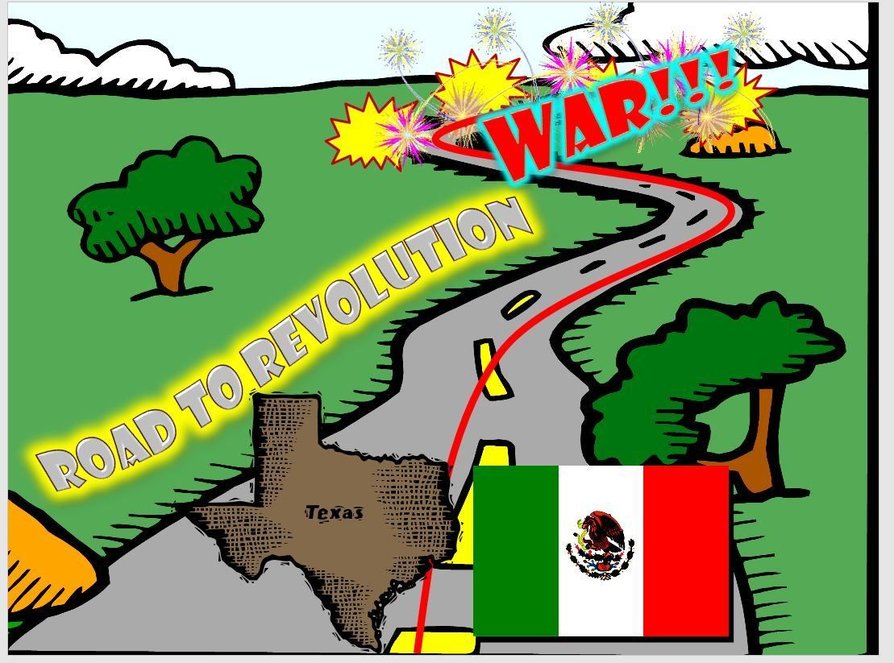
One step and event at a time, we will read and explain the road towards Texas independence.
Some Background Information:
Mexico encouraged immigration into Texas in the early 1820’s in order to help settle the Texas Mexican State. Many Anglo-American Immigrants (mostly coming from the US) made the journey including Stephen F. Austin and the "Old 300" into Mexico Tejas.

One step and event at a time, we will read and explain the road towards Texas independence.
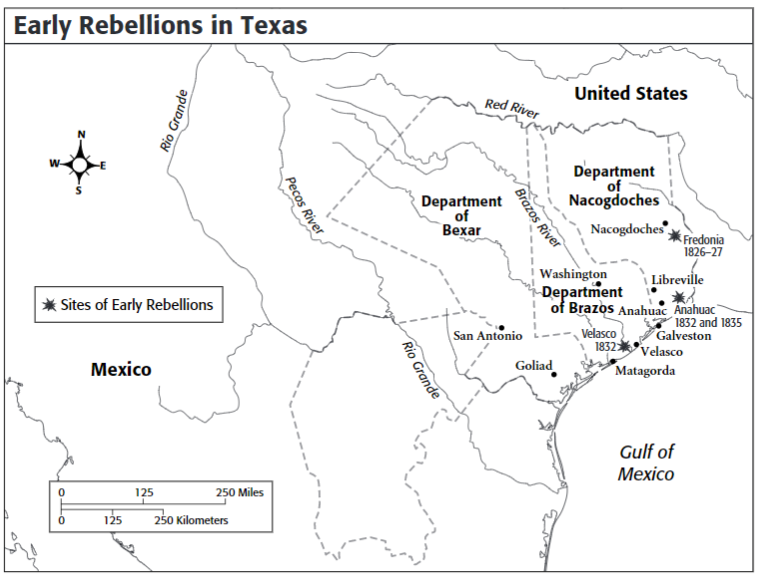
Click the image to zoom in.
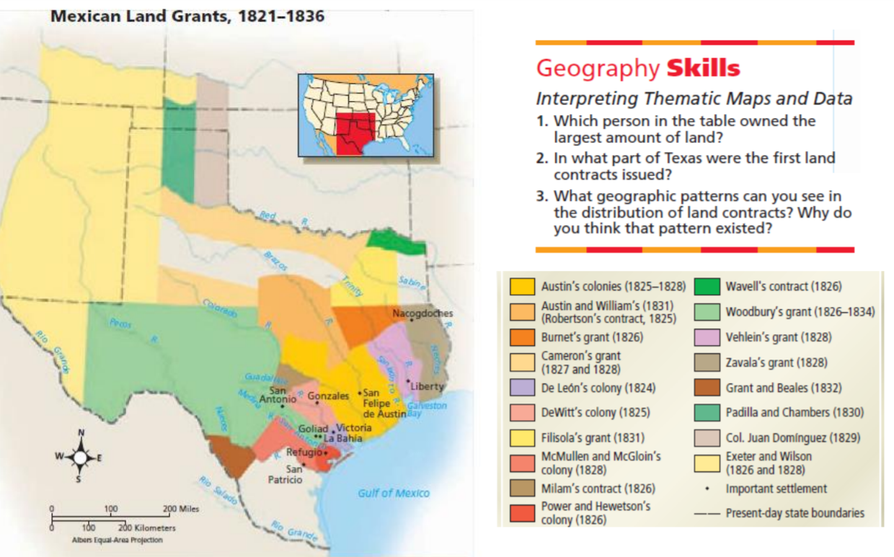
Important: Remember that SFA wasn't the ONLY empresario. Once other Anglos realized SFA was rich and successful, they came to Texas to become empresarios as well. In the key are the individuals that also colonized.
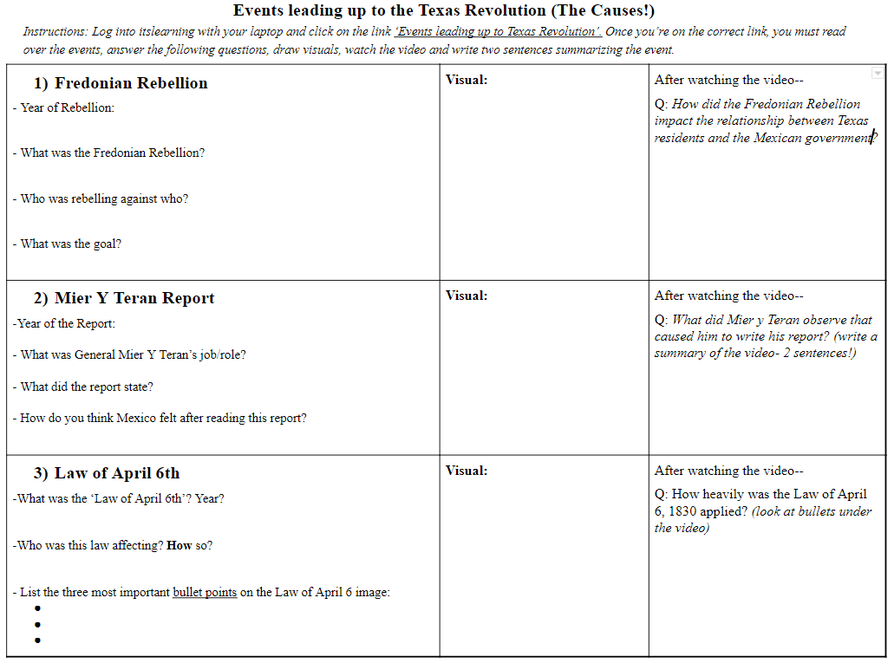
Reminder: As you are working on this Sutori page, make sure to complete this sheet for a grade.
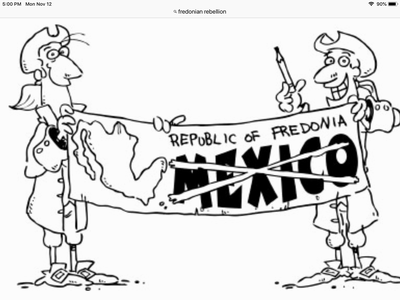
The Fredonian Rebellion was the first attempt by Anglo settlers in Texas to secede (withdraw) from Mexico. The settlers, led by Empresario Haden Edwards and his brother, Benjamin Edwards, declared themselves free from Mexican rule. They planned to create their own country called the 'Republic of Fredonia' near the town of Nacogdoches. They declared their area independent of Mexican control. Edwards had also asked for help from Austin's colony and from the United States to go against Mexico, but they received no assistance. Stephen F. Austin tagged along with Mexican troops from San Antonio and approached the town of Nacogdoches to stop the rebellion. In January of 1827, the Fredonian Rebellion had collapsed (fell apart). Some of the Fredonian's (the supporters) were captured, but most fled across the Sabine River into the U.S. to never return again.
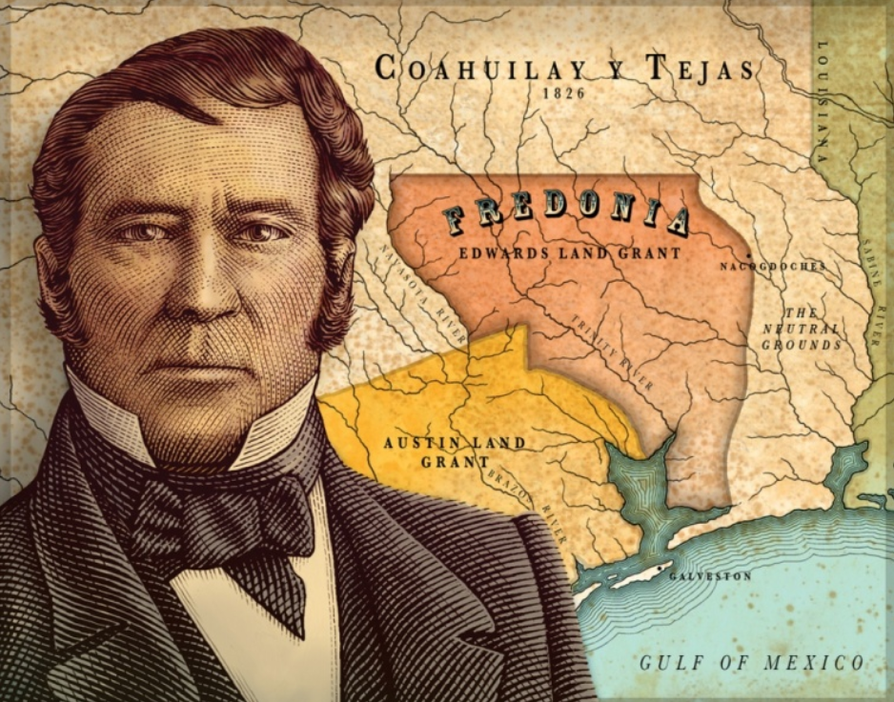
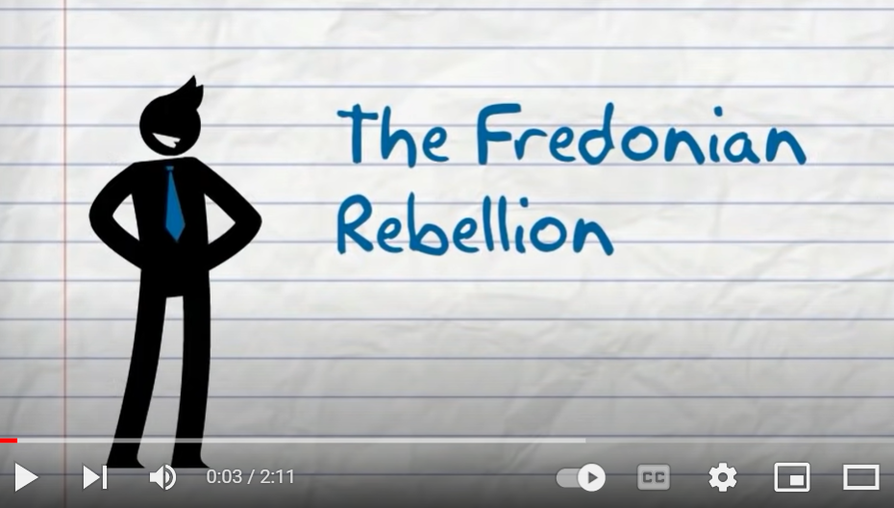
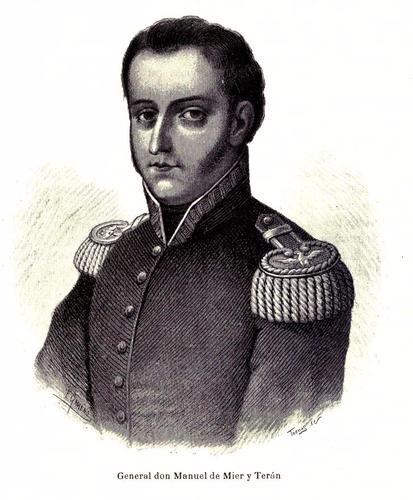
After the Fredonian Rebellion, a well known Mexican General named Manuel Mier Y Terán (his last name) was sent to investigate the conditions in Texas on behalf of the Mexican government. The Mexican government became concerned that it was losing control of Texas. One reason that accounts for Mexico's concern was that the United States attempted to buy Texas from Mexico for 1 million dollars. The Mexican government began to think that the U.S. was plotting to take over Texas.
After further inspection, Mier Y Teran created a report based on his tour of Tejas. In his report he wrote:
Terán also reported that there was a lot of U. S. influence on Texas: for example, most of the people were speaking English, were still not practicing Catholicism, and were using U.S. currency (money) in certain stores. In his report, Mier y Teran suggested that Mexico needed to get in control of Texas or else they could lose the territory.
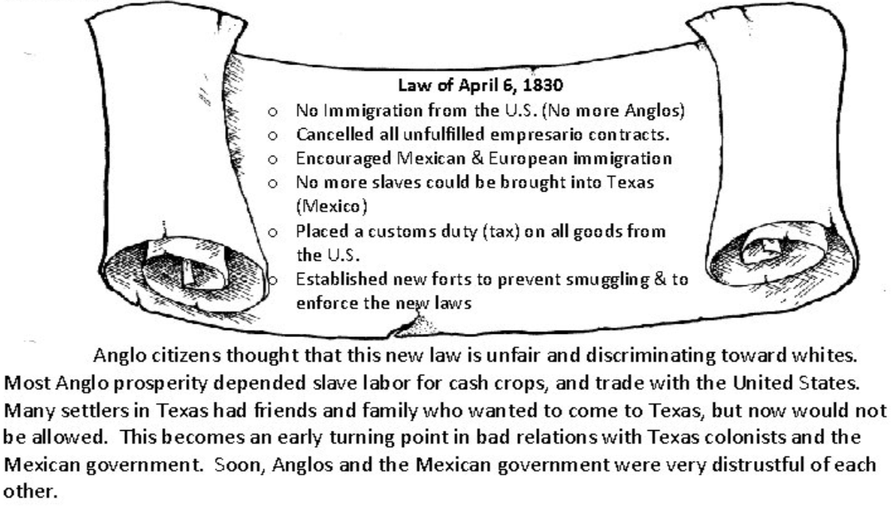
In response to General Manuel Mier y Terán's Report, Mexico passed the Law of April 6th, 1830. The Law made immigration from the U.S. illegal and cancelled all empresario grants that had not been yet fulfilled. The Mexican government also encouraged Europeans and more Mexicans to settle in Texas. The new law was intended to help Mexico regain control of Texas and diminish the American presence/influence in Tejas. New forts and presidios were established to stop illegal immigration and high taxes were put on imports (goods coming in for buying purposes). Their friends and family in America would not be able to join them in Texas.
In 1830, the President of Mexico implemented several changes to discourage immigration from the United States into Texas because the US settlers were outnumbering the Mexican born settlers. Some of the measures imposed on the settlers were:
Conflicts developed between anglo settlers and the Mexican military after the Law of April 6, 1830 passed. One incident occurred at Anahuac, a settlement near Galveston Bay. Mexican Colonel Juan D. Bradburn arrived at Anahuac with forty men. They had orders to:
Bradburn (Mexican general) captured two runaway slaves and held them until he could figure out what to do with them. William B. Travis lied to Bradburn when he claimed they were his slaves. Bradburn arrested Travis and charged him with sedition (speech encouraging people to rebel against authority). A “War Party” of radical Federalists demanded Travis’s release. James Bowie was one of the men who wanted Travis to be released. As a Federalist, he wanted government power to come from the people. Federalists opposed Centralists like Bradburn who believed in a strong national government. After Travis and other American prisoners were released, they returned to Anahuac and rebelled against Bradburn and the rest of the Mexican officers.
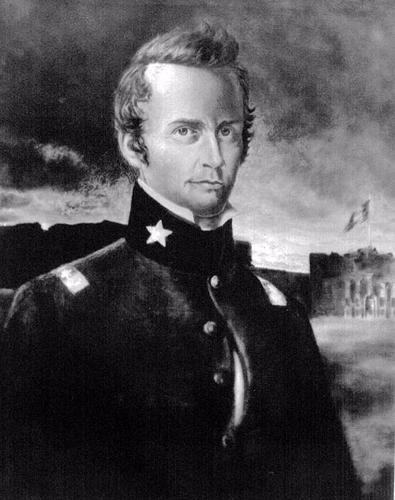
Painting of William B. Travis, Texas State Library and Archives